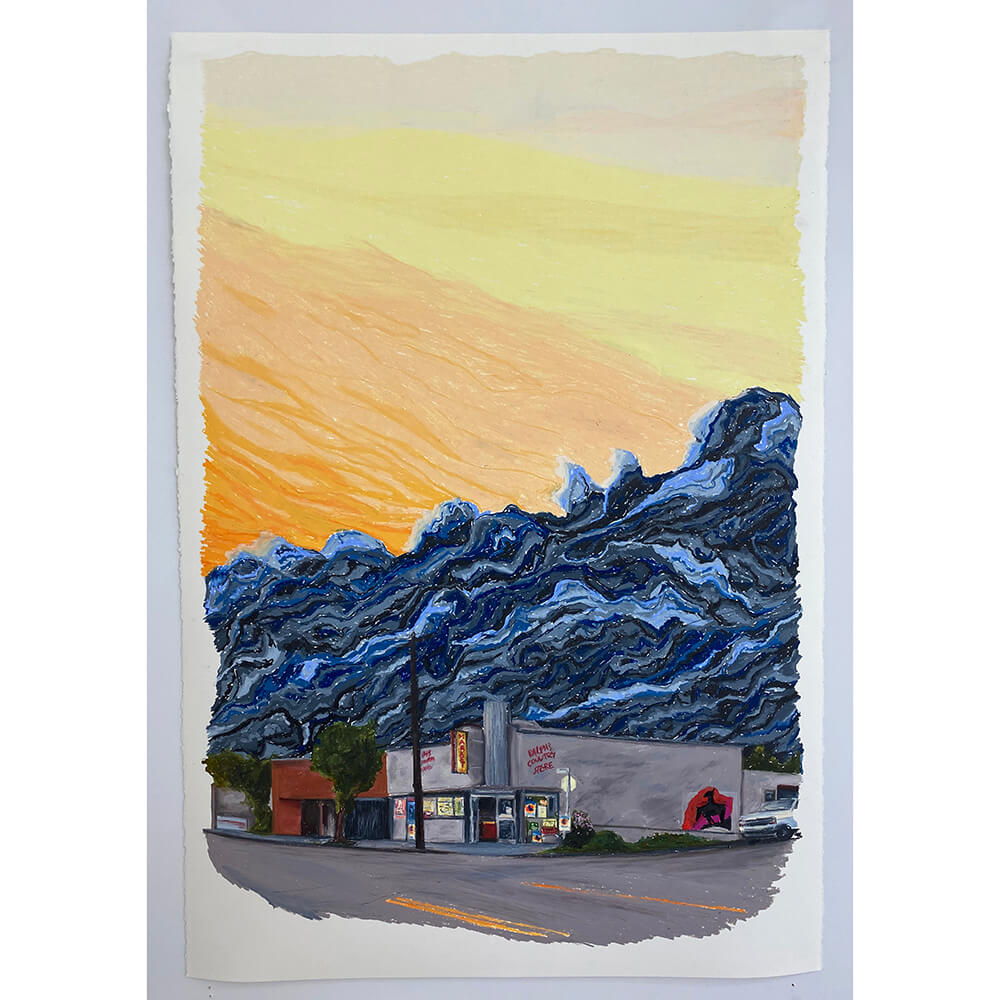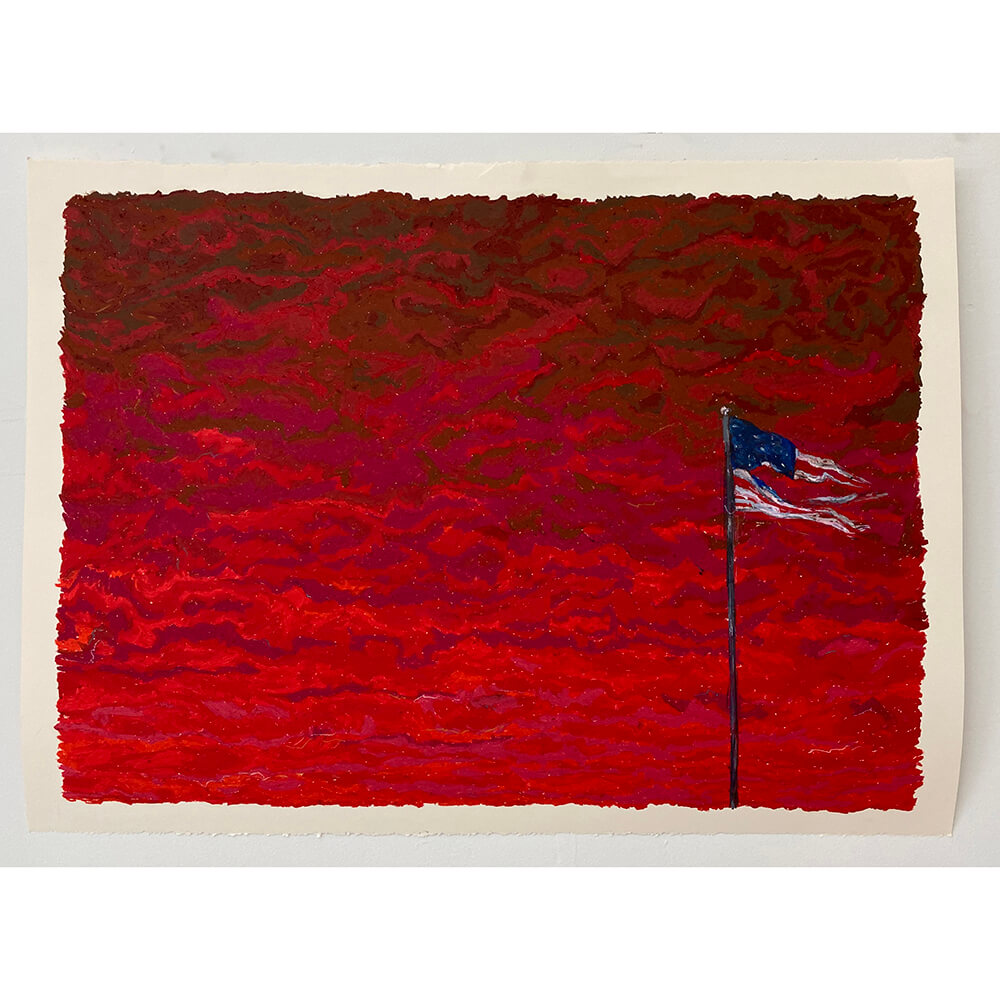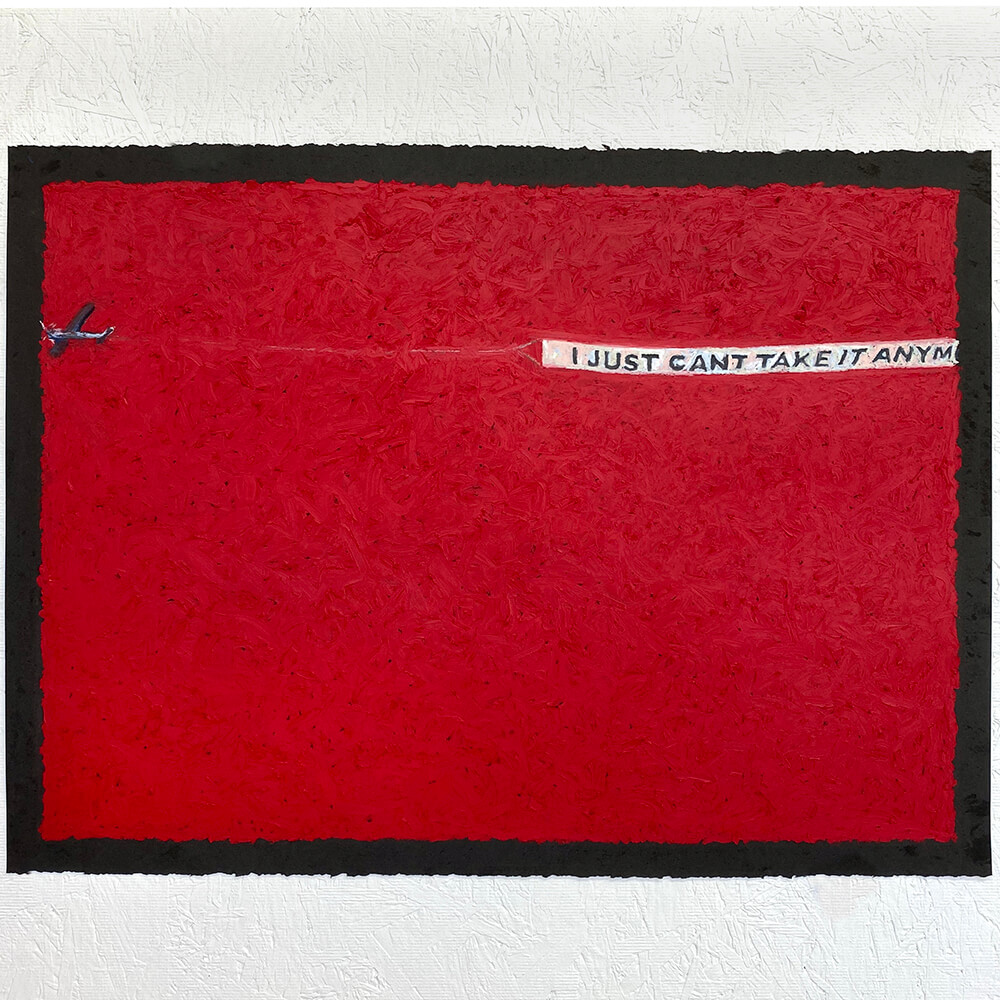Profile of the Week: Ivan Rios-Fetchko

LA photographer and artist Ivan Rios-Fetchko is inspired by literary, visual and conceptual images and ideas of America. Ivan’s relationship with the open road and travel has him exploring a multifaceted depiction of the land. His work represents an intercession of the reality of day-to-day life for inhabitants and their idealised counterparts.
Ivan was able to tell us more about the nature of his work, and what drives it through FRONTRUNNER’s social site.
Where are you from?
I grew up in Santa Monica, CA, but my mother is from Pennsylvania and my father is from Uruguay, two places I am deeply connected to.
When did you start your art practice?
Back in high school, I spent much of my free time taking experimental photographs as well as putting together slide shows on an old Kodak projector, but it wasn’t until my second year in college that I began painting. I fell in love with the possibilities that painting provides and it has been my main focus since, though I still keep my camera handy and generally work from images I take.

Oil pastel on paper, 44″ x 30″, 2020
How do you describe your vision for your work?
Most of my painting and photography work up until recently dealt with the wide-open American landscape and how it has been imagined and re-written. Having grown up in Los Angeles (the ”End of the West”), I was interested in what a ”frontier” could look like when there was no more physical space for exploration and after understanding the damage that the ”frontier mindset” caused to the land and people of the actual (not mythical) ”West.” This interest led me to paint imagined and real landscapes that I developed out of photographs from road trips and hikes, with a strong emphasis on the road as a visual-emotional marker. Those paintings attempted to imagine a space in which people unable to thrive in the current US reality could live unencumbered. My recent work has become less abstract, but I am still trying to create a space between reality and fantasy, hopefully revealing the contradictions between our day-to-day lives and the hopes we project onto the world around us.

Oil pastel on paper, 22″ x 30″, 2020
What challenges have you found pursuing a creative career? How did you overcome them?
Having placed so much importance on travel and the open road as a driver for new paintings made settling into a city difficult. When I moved back to Los Angeles, I found myself in a creative rut that I was only able to escape by broadening what I was looking at—once I began to see the depth of meaning in the landscapes around me, my most recent drawings began to come together. Reading Rayner Banham’s book about Los Angeles was instrumental in that shift and I find that, often, it is reading that allows me to move past creative roadblocks.
Another—in no way unique—challenge has been the economic difficulty of being a young artist in an expensive city. After working a variety of jobs that were more draining than the paycheck was worth, I was lucky enough to find a good gig working as an art handler. Spending my days looking at a tremendous variety of art lets me encounter things I never would have otherwise and hanging works in people’s homes has been a great way to pay the bills while getting a real sense of what an exciting and considered collection looks and feels like.

Oil pastel on paper, 22″ x 30″, 2020
What are your artistic/creative inspirations?
Someone pointed out the way that a windshield frames the world parallels the way a canvas does a painting and, following that thought, it’s clear to me that the things I see through my car window have always been my main visual inspiration. The way that those images are interpreted, however, comes from a variety of places. Other artists, of course, are important lenses to see things through—Rothko’s sense of space and color has been a big influence on my compositions, Alice Neel’s approach to materiality (coupled with a love for brutalist architecture) has informed how I treat the materials I work with, and On Kawara’s dedication to format and clarity fuels my impulse to work in series and with totalizing impulses. Outside of the visual arts, my background in literature has provided me with a variety of methods of interpretation that I turn to often; William Faulkner and Toni Morrison’s writings (two authors inextricably tied together) have been key to my understanding of America, while contemporary poets, such as Mei-Mei Berssenbrugge and Tan Lin, give me a way to think about language as integral to visual spaces, and vice-versa.
Tell me about your process.
The body of work I am focusing on right now—“When I Think of America, I Think of Sunsets”—is all drawn from images I’ve taken of Los Angeles. When I am able to, I take long drives towards the setting sun, trying to shoot pictures that match the emotional resonances of the neighborhood I am driving through. In the studio, I sit with those images and sketch out skies that match both the spaces and the feelings they produce in me. Drawing from those sketches and images, I work my way up from the horizon into the clouds, then back to the street, taking colors and gestures from one space to the other in an attempt to make sure things resonate across the page. When I am away from the studio, I let the music I listen to, podcasts I follow, and books I read, create titles for each piece as well as using them to interpret the “real” spaces I am depicting.

Oil pastel on paper, 22″ x 30″, 2020
Do you think your work has a message? How is it received?
I remember a classmate of mine laughing when they were asked if their work was “political.” After laughing, they said something I’ve thought about ever since: “Of course my work is political—and yours is too, even if you say it isn’t!”
Any depiction of the world acts as interpretation of it and my paintings are no exception. In broad strokes, I am trying to redirect the focus on the American West from the very damaging “empty, wide open, spaces” interpretation to one that sees the current landscape as being the result of hubris and over-extension. When I say “When I Think of America, I Think of Sunsets,” what I’m hoping to point out is the way we in this country have arrived at an endpoint, at a horizon line that is slowly disappearing into the night, no matter how beautiful the day seemed before it. Thankfully, most people who see the work read into it in that way. Still, it is always interesting when people have vastly different interpretations than what I had been thinking about—often, the things we say don’t sound like we think they do.

Oil pastel on paper, 44″ x 30″, 2020
Where would you like to see your work in 3 years? What goals do you have for your practice?
Not knowing what my work will look like, pictorially, in a few years, is something that excites me. My only hope is that the lines of thought that I am trying to develop in my studio practice continue to mutate towards an interpretation of reality that feels urgent and concise.
Are there other emerging artists you can recommend?
It’s hard to put down just a few names, knowing how many good, young, artists there are, but some of the people I look to for inspiration include Celeste-Dupuy Spencer, Luis Flores, Erick Medel, Sharif Farrag, and Skye Volmar.
FRONTRUNNER social forum: @iriosfet
Website: https://www.ivanriosfetchko.com/
Instagram: @surplus_value
Responses